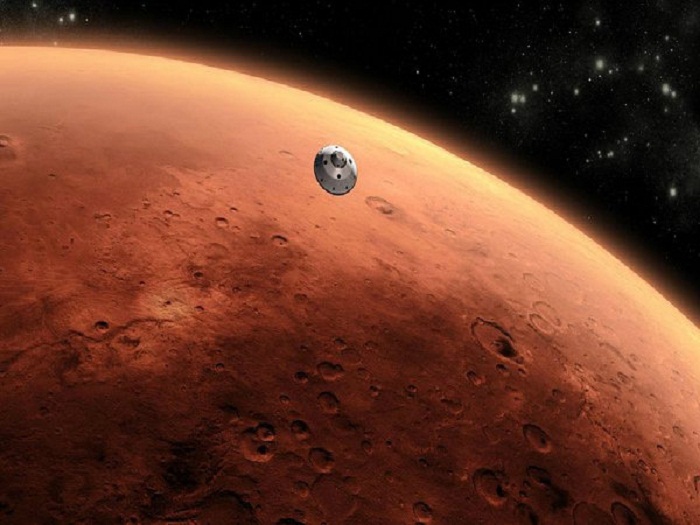Boron has been detected on Mars for the first time

"No prior mission to Mars has found boron," said one of the researchers, Patrick Gasda, from the Los Alamos National Laboratory in New Mexico.
The location of the discovery indicates that the subsurface groundwater the boron was dissolved in would have been warm and suitable for microbial life to thrive in.
"If the boron that we found in calcium sulphate mineral veins on Mars is similar to what we see on Earth, it would indicate that the groundwater of ancient Mars that formed these veins would have been 0-60 degrees Celsius [32-140 degrees Fahrenheit] and neutral-to-alkaline pH," said Gasda.
Curiosity found the boron on its trek up the slopes of Mount Sharp, within the Gale Crater. It identified the mineral using its on board laser-shooting instrument called Chemistry and Camera.
Boron here on Earth is associated with sites where there was once lots of water, but it`s since evaporated away - like California`s Death Valley.
That might not necessarily be the case on Mars, but the team thinks the boron could have once been dissolved in the great lake that filled the Gale crater. As the lake dried up, the boron seeped down into groundwater.
Further testing is needed to identify exactly how the boron ended up in this site specifically and nowhere else we`ve yet studied, but the team has two hypotheses.
Either the drying out of the Gale lake resulted in a vast boron-containing deposit in an overlying layer that Curiosity hasn`t yet reached, or maybe shifts in the chemistry of clay-bearing deposits and groundwater changed how boron was transported around local sediments, so it`s not found everywhere that water once was.
The results were presented at a meeting of the American Geophysical Union in San Francisco last week. They`ve yet to be published in a peer-reviewed journal, and the team has a lot more work to do in analysing the samples before that happens.
But the find is still incredibly exciting. As Curiosity made its way up Mount Sharp, drilling every 25 metres (80 feet), it`s seen evidence of changing rock composition that indicates shifting ancient lakes and wet underground environments back on ancient Mars.
"There is so much variability in the composition at different elevations, we`ve hit a jackpot," said one of the team, John Grotzinger from Caltech.
"A sedimentary basin such as this is a chemical reactor. Elements get rearranged. New minerals form and old ones dissolve. Electrons get redistributed. On Earth, these reactions support life."
"We are seeing chemical complexity indicating a long, interactive history with the water. The more complicated the chemistry is, the better it is for habitability. The boron and clay underline the mobility of elements and electrons, and that is good for life."
Without actually finding evidence of ancient microbes, we`re not going to be able to say for sure whether Mars once hosted life. But with each discovery, it seems more and more likely that it could have at least been possible.
And if we can find out why life did or didn`t form on the red planet, we might gain some insight into one of the most fundamental human mysteries: why we seem to be so alone in the Universe.
/ScienceAlert/















































